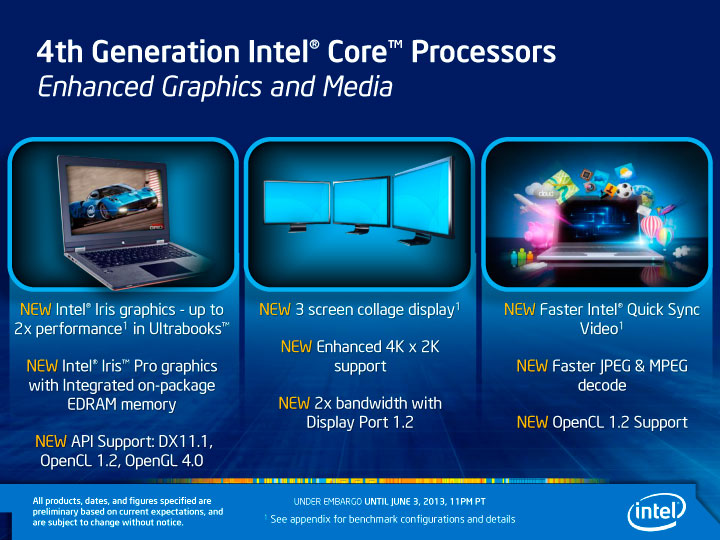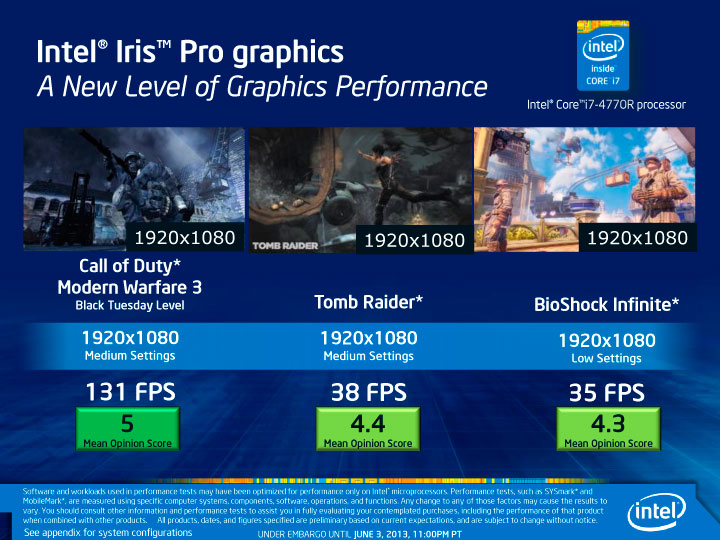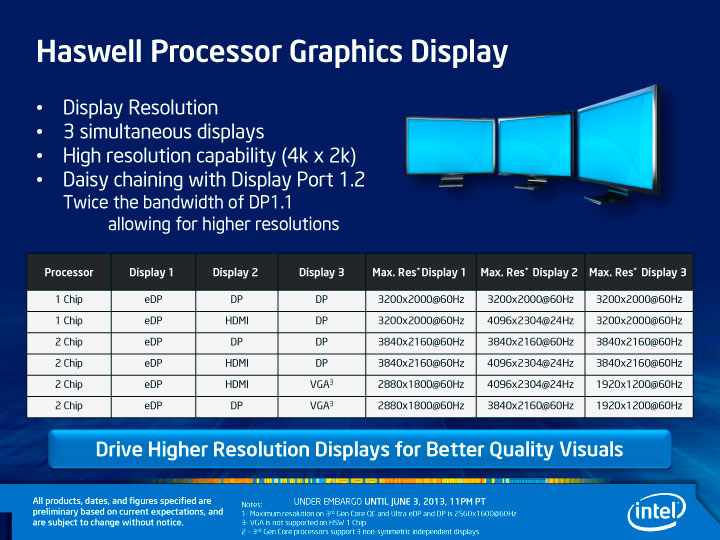Haswell Architecture
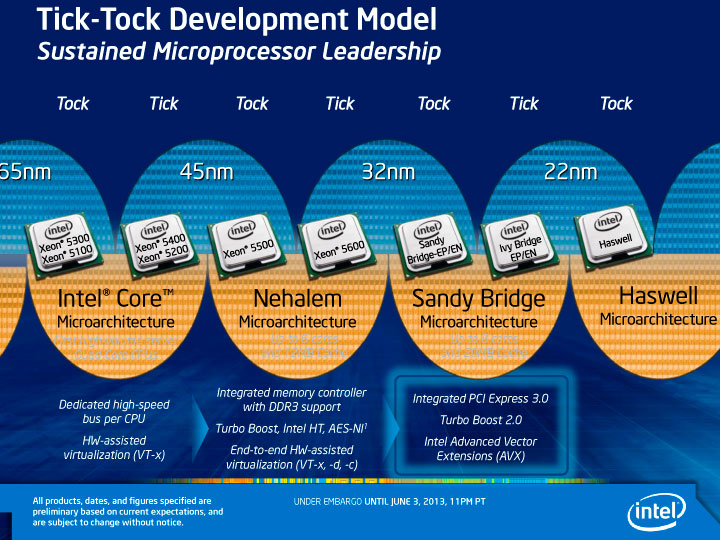
Although Haswell is a tock in Intel's Tick-Tock development cadence, it is not a significant re-design of the Intel 64 Compute cores. It is more an evolution as the pipelines are largely unchanged from Ivy Bridge.
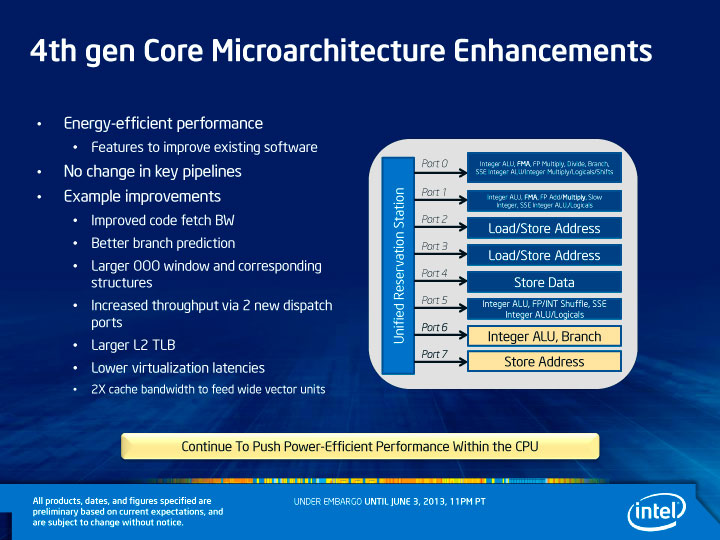
However since it is a new architecture, they have added a number of new features which do classify it as a new major node
- Power Management states
- Integrated Voltage Regulator
- Support for optional eDRAM (L4 Cache)
- Haswell New Instructions (AVX2, FMA3, Gather and Integer Instructions)
- Improved code fetching and branch prediction
- Widening and increasing internal data paths, structures and buffers for improved bandwidth and throughput
- Two additional ports for instruction and code dispatch
- For specific mobile parts, a single system-on-a-chip package incorporating chipset.
- Chipset enables more SATA 6gbps and USB3 ports for the end user.
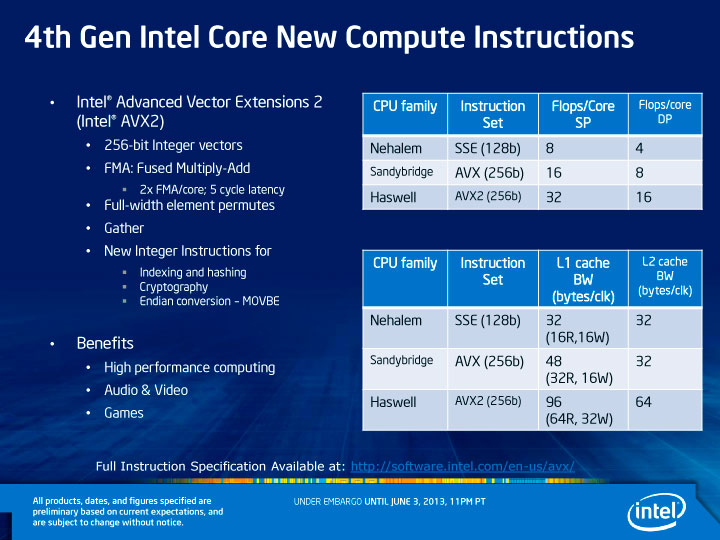
While this may seem all nice and good to some power users or enthusiasts, there is a catch. Just like every other mainstream desktop Intel platform since 2008 the platform is restricted; there are not enough PCI lanes available to support a large number of devices operating concurrently, especially graphics cards.
Haswell supports 18 PCIE lanes total in the CPU whereas Sandy Bridge-E, Intel's workstation/server/extreme enthusiast part has 40 lanes, making Triple graphics cards with extra peripheral cards work much better without comprising bandwidth or auxiliary PCIE lanes.
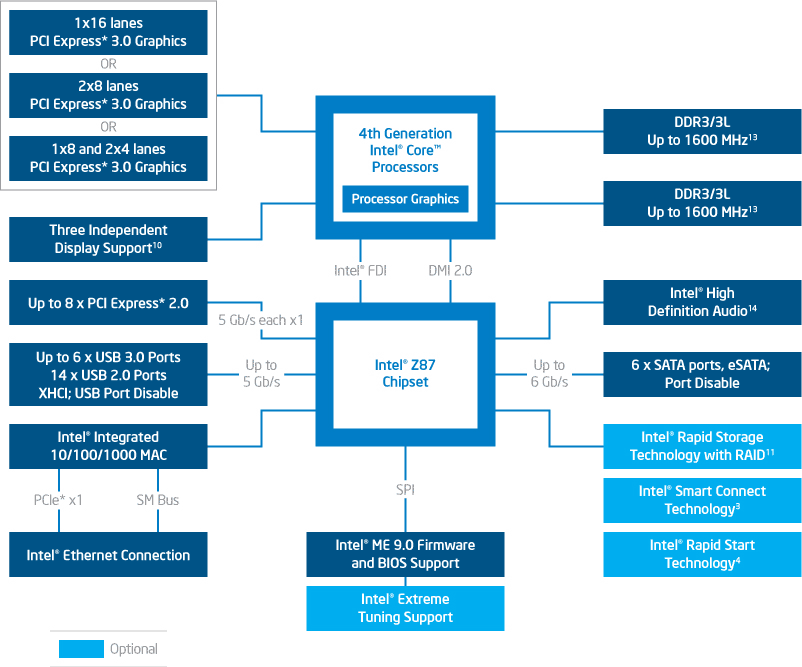
However, Base Clock overclocking is brought across from X79, allowing for speeds of 125 to 200MHz, combined with the Integrated Voltage Regulator and Ring Bus allows an interesting overclock experience. We achieved 4.6GHz CPU and 1.5GHz integrated GPU stable with our sample review kit however our cooler was borderline at this speed. 4.3GHz is a more manageable overclock.
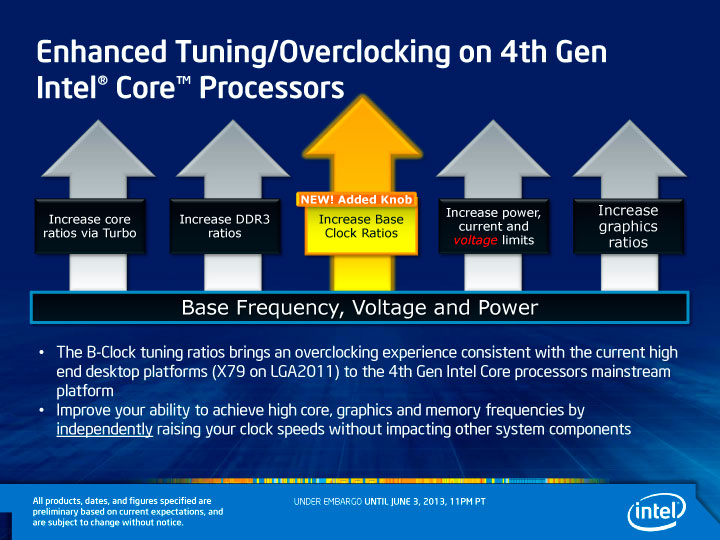
In a nutshell, HD Graphics 4600 uses the same SIMD based 'slice' architecture as Ivy Bridge's HD4000 (and Sandy Bridge before that). However Execution Units are doubled as is the clock speed. These two key elements plus the improved Quick sync make up the performance advantage for the GPU
